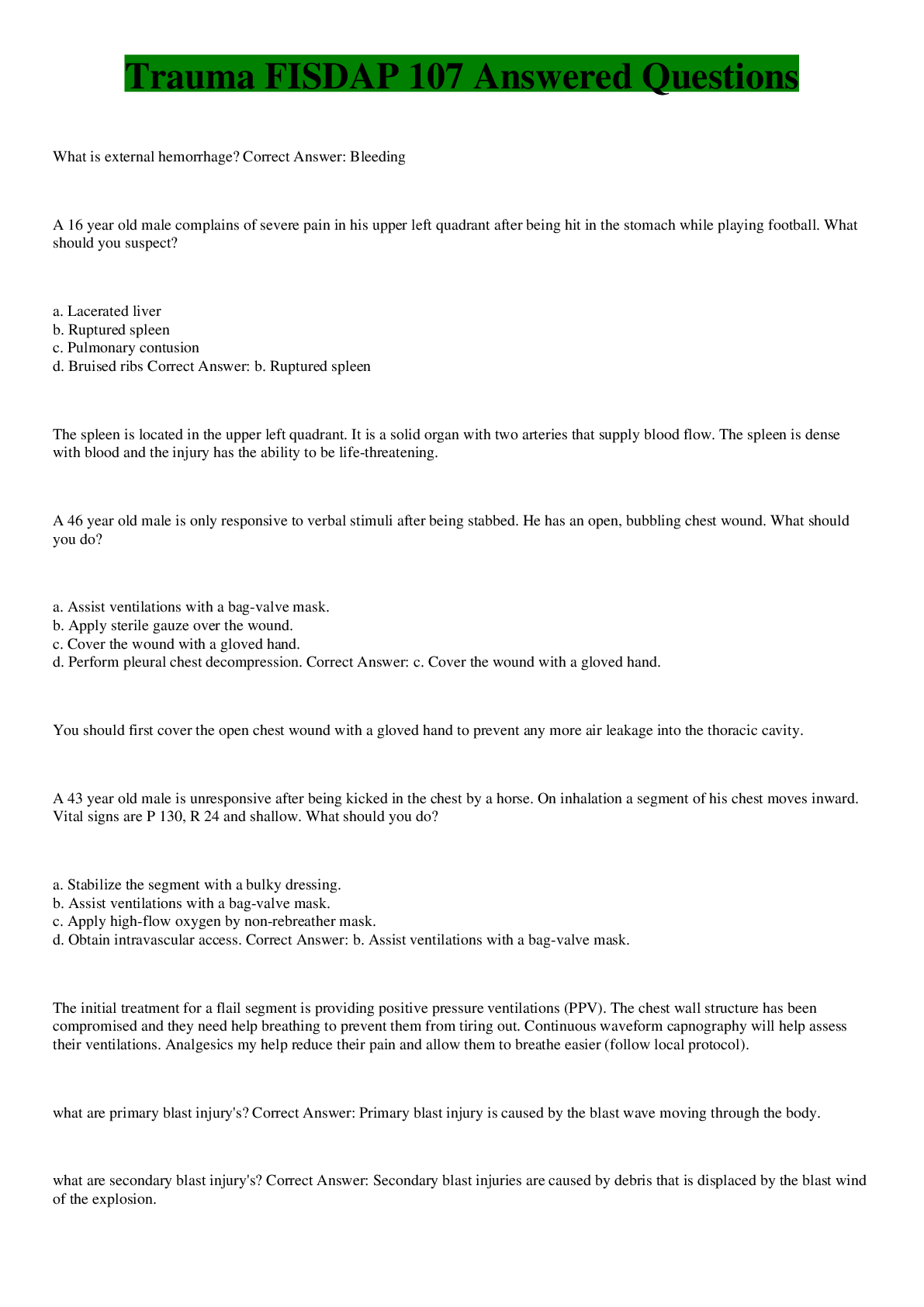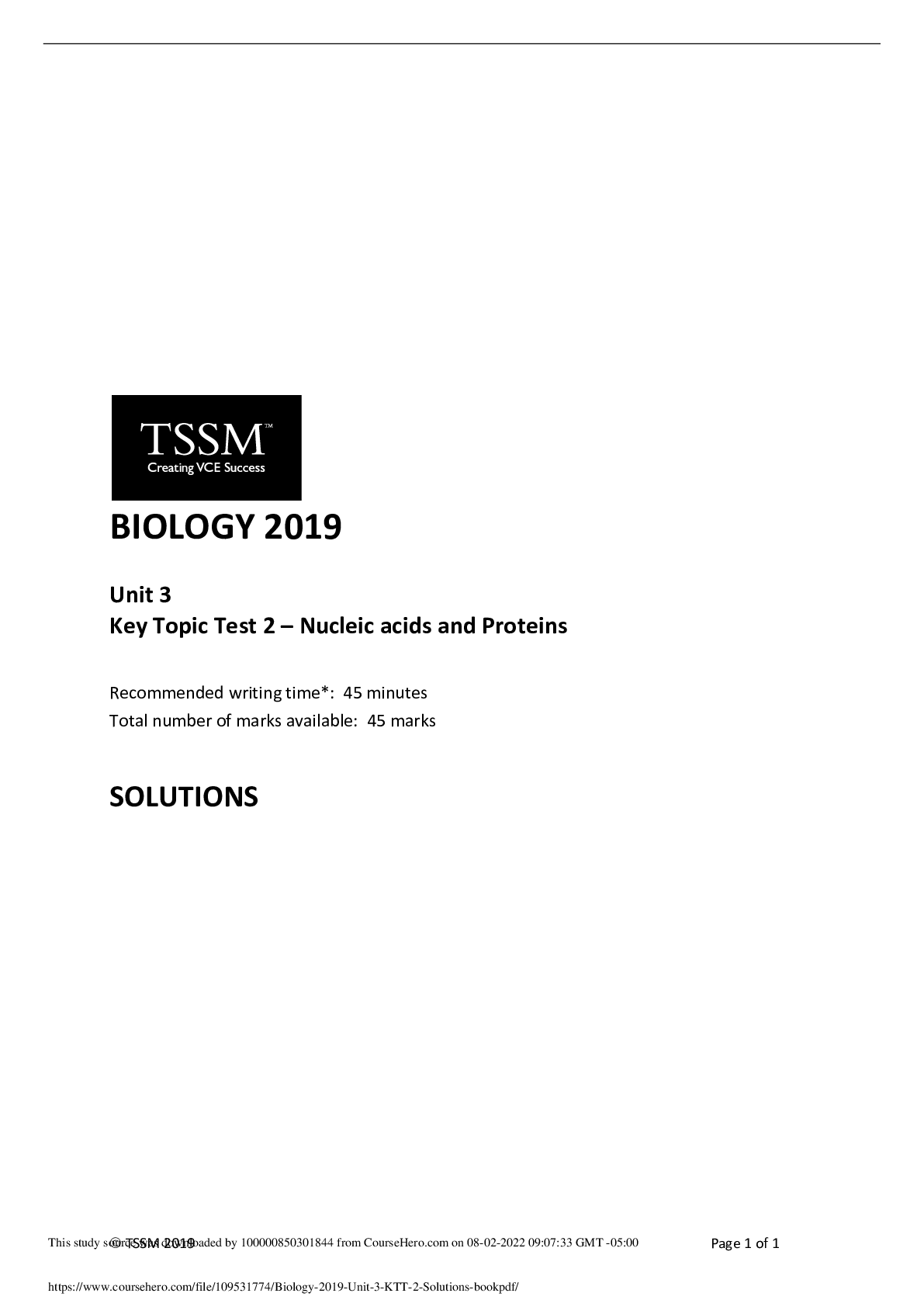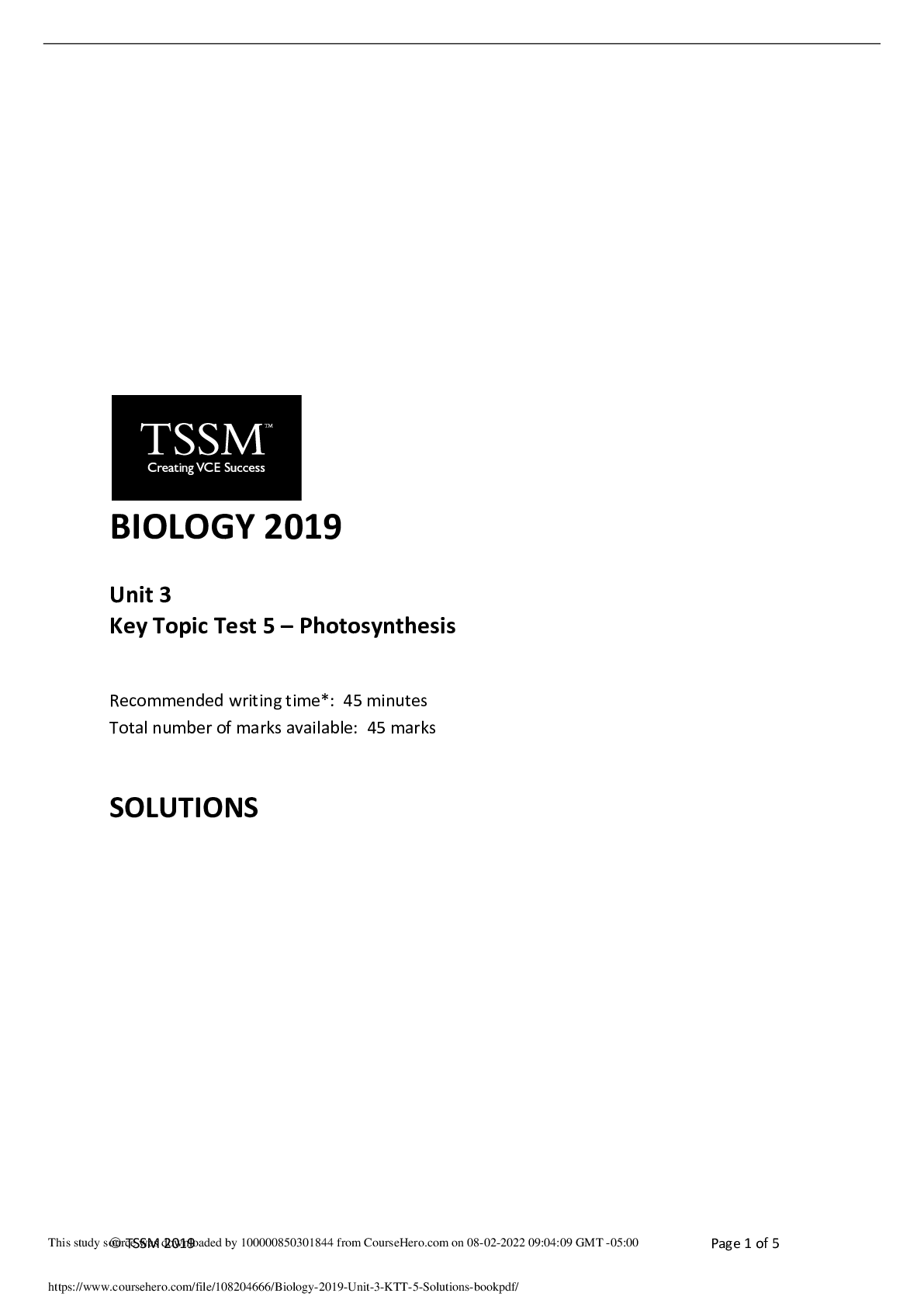Biology > ANSWERS AND COMMENTARIES > HKDSE BIOLOGY: Connecting Concepts Book 1A Answers to Exam practice (All)
HKDSE BIOLOGY: Connecting Concepts Book 1A Answers to Exam practice
Document Content and Description Below
HKDSE BIOLOGY: Connecting Concepts Book 1A Answers to Exam practice © Aristo Educational Press Ltd. 1 Answers to Exam practice Chapter 1 Introduction to biology Multiple-choice questions (p.1-18... ) 1. D The aroma of bread is a stimulus that the girl detects. 2. D 3. D 4. D 5. C Short questions (p.1-19) 6. Reproduction: The adult duck laid an egg containing an embryo. (1) Growth: The embryo inside the egg grew and developed into a duckling (young duck). (1) 7. (a) Fleas transmit plague from rat to rat. (1) (b) Fleas transmit plague from infected rats to healthy rats. (1) (c) Science is socially and culturally embedded. (1) Structured questions (p.1-19) 8. (a) Use lime water / hydrogencarbonate indicator (1) (b) (i) Respiration (1) Excretion (1) (ii) Yes, living organisms can release carbon dioxide by respiration. ORNo, the mud may have some reactions that release carbon dioxide. (1 + 1) (1 + 1) (c) Any three of the following with reasonable examples: growth, sensitivity / irritability, movement, nutrition, reproduction (1 mark each, max. 3) HKDSE BIOLOGY: Connecting Concepts Book 1A Answers to Exam practice © Aristo Educational Press Ltd. 2 9. (a) Observation: People who had caught cowpox never caught smallpox. (1) Proposing a hypothesis: Inoculating people with cowpox would immunize them against cowpox and smallpox. (1) Conducting experiment: He inoculated an eight-year-old boy with liquid taken from a cowpox blister. After the boy had developed cowpox and recovered, he inoculated the boy with smallpox. (1) Drawing a conclusion: The experience of cowpox infection would immunize one against smallpox. (1) (b) With biological knowledge, we are able to develop useful technology (e.g. vaccination)(1) to help solve problems in the society, thus benefiting the community. (1) 10. (a) Observation: shells of the shellfish from the sea were getting thinner (1) Hypothesis: high levels of carbon dioxide in the sea water cause the sea to become more acidic and the sea water may dissolve the shells (1) (b) Limpet: 20.3% Cockle: 18.7% Mussel: 12.5% (1)(1)(1) (c) Mussel (1) (d) Decrease in mass of the shells is caused by acid. (1) (e) Test each type of shell with each strength of acid (1) Chapter 2 Molecules of life Multiple-choice questions (p.2-29) 1. C 2. A Some minerals in the human body are found in structural materials such as calcium phosphate in bones and teeth. 3. B The building block of cellulose is glucose. 4. DSucrose and starch give negative results to the Benedict’s test. 5. A HKDSE BIOLOGY: Connecting Concepts Book 1A Answers to Exam practice © Aristo Educational Press Ltd. 3 6. D 7. B 8. D 9. C 10. A Short questions (p.2-30) 11. (a) Magnesium is used in the synthesis of chlorophyll. (1) (b) Any two of the following: (2) • Water is a good solvent. Many substances needed by the organism are dissolved in water. (1) • Water is transparent. Light can penetrate through water and can be captured by the organism for photosynthesis. (1) • Water has a high specific heat capacity. Its temperature remains fairly stable despite changes in environmental temperature. (1) • Ice floats on liquid water. This helps prevent the water underneath ice from freezing, so organisms can live in the water. (1) • Water has a low viscosity. Many organisms can move relatively easily in water. (1) 12. (a) Add iodine solution to the cell. (1) If the granules contain starch, they will turn blue black. (1) (b) Cellulose (1) (c) DNA / proteins / lipids (Any two, 2) 13. Statement Triglyceride Phospholipid Cholesterol Contains only the elements carbon, hydrogen and oxygen Insoluble in water Contains glycerol Important in membrane structure Contains fatty acids (1 mark per correct row, 5) 14. (a) W: amino acids (1) X: glycerol (1) Y: phosphate (1) HKDSE BIOLOGY: Connecting Concepts Book 1A Answers to Exam practice © Aristo Educational Press Ltd. 4 Z: fatty acid (1) (b) Triglyceride (1) 15. (a) nitrogen, sulphur (1, 1) (b) (1) (c) dipeptide, water (1, 1) 16. (a) (3.4 ÷ 0.34) × 5 (1) = 50 (1) (b) The molecule is double-stranded. (1) (c) RNA The percentages of G and C are not equal and so there is no base pairing. (1)(1) Structured questions (p.2-33) 17. (a) lactose + water glucose + galactose (1) (b) Hydrolysis (1) (c) Mix equal volumes of milk and Benedict’s solution. Heat the mixture in a water bath. (1)(1) The presence of reducing sugars would result in the formation of brick red precipitate. (1) (d) (i) Protein / lipid (1) (ii) Test for proteins: Dip a protein test strip into a milk sample. (1) The presence of proteins would cause a distinctive colour change in the test end. (1) OR Test for lipids: Obtain a milk sample to perform the grease spot test. (1) The presence of lipids would produce a permanent translucent spot on the filter paper. (1) (Any one set, 2) HKDSE BIOLOGY: Connecting Concepts Book 1A Answers to Exam practice © Aristo Educational Press Ltd. 5 18. (a) Water provides buoyancy. (1) This enables otters to float on water. (1) OR Movement of water (1) can carry otters from place to place without the expenditure of energy. (1) OR Water is incompressible. (1) When otters propel in water, water provides a reaction force that results in movement. (1) (Any two sets, 4) (b) The layer of fat is a good heat insulator, which can reduce heat loss from the otter to the water. (1)(1) 19. (a) Lipids (1) (b) Add a drop of liquid food sample to a piece of filter paper and leave the filter paper undisturbed for around 15 minutes. If the sample contains lipids, it leaves a persistent translucent spot on the filter paper. Dip the paper into an organic solvent, the spot would disappear. (1)(1)(1) (c) As an essential component of cell membranes (1) / For making bile salts (1) / For making lipid hormones (1) (Any two, 2) 20. (a) Circle any –NH2 group (1) (b) Only protein in the sample contributes significantly to its nitrogen content. (1) (c) For growth and repair (1) / As a structural component of various cellular structures (1) / For making enzymes, antibodies and certain hormones (1) / As a source of energy (1) (Any two, 2) (d) Meat / fish / eggs / peas / soya beans (Any two, 2) (e) Milk is the main diet of infants, while adults can also consume other foods for nutrition. More rapid growth/ metabolism in infants than that in adults (1) [Show More]
Last updated: 1 year ago
Preview 1 out of 23 pages
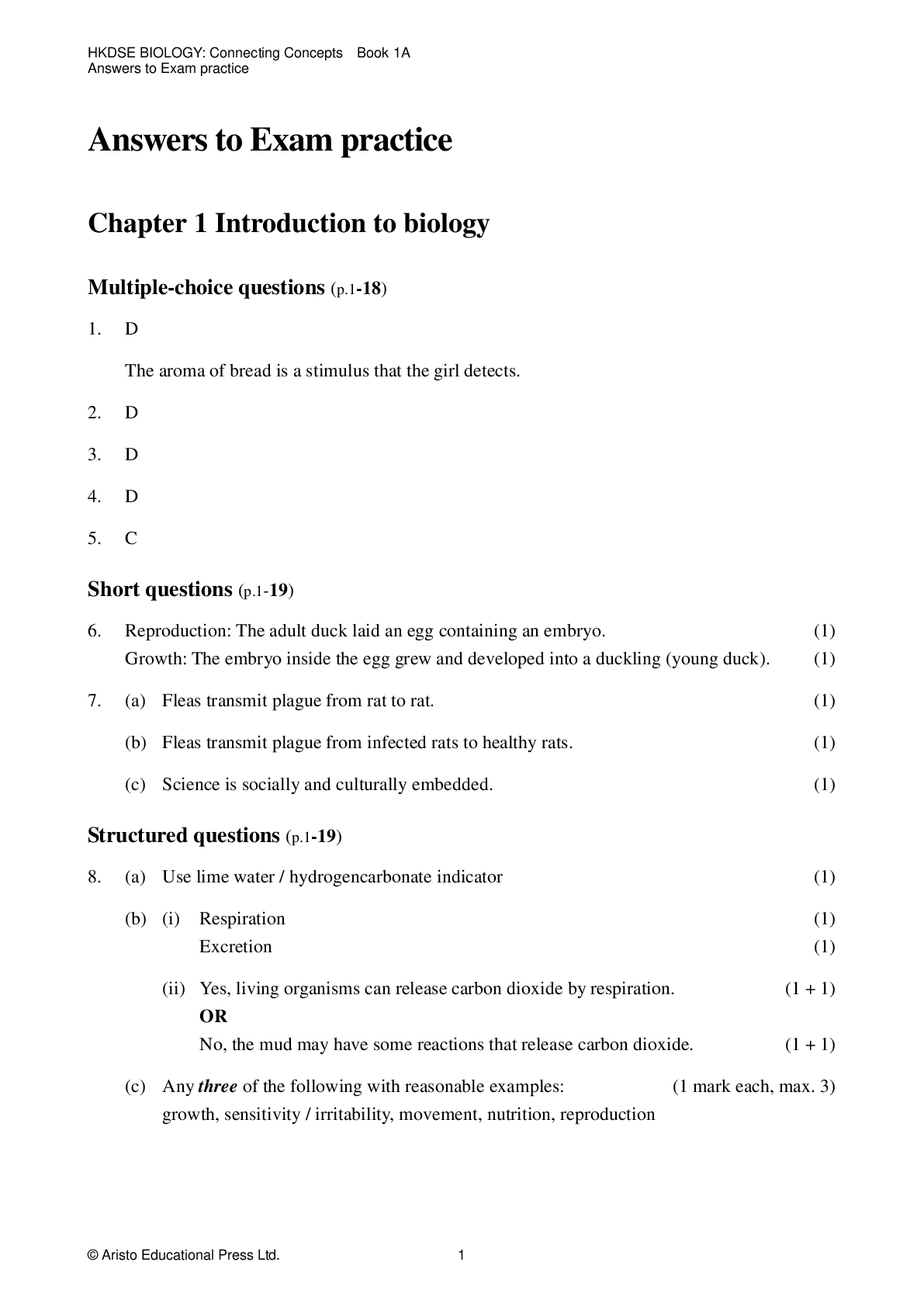
Reviews( 0 )
Document information
Connected school, study & course
About the document
Uploaded On
Mar 31, 2023
Number of pages
23
Written in
Additional information
This document has been written for:
Uploaded
Mar 31, 2023
Downloads
0
Views
114

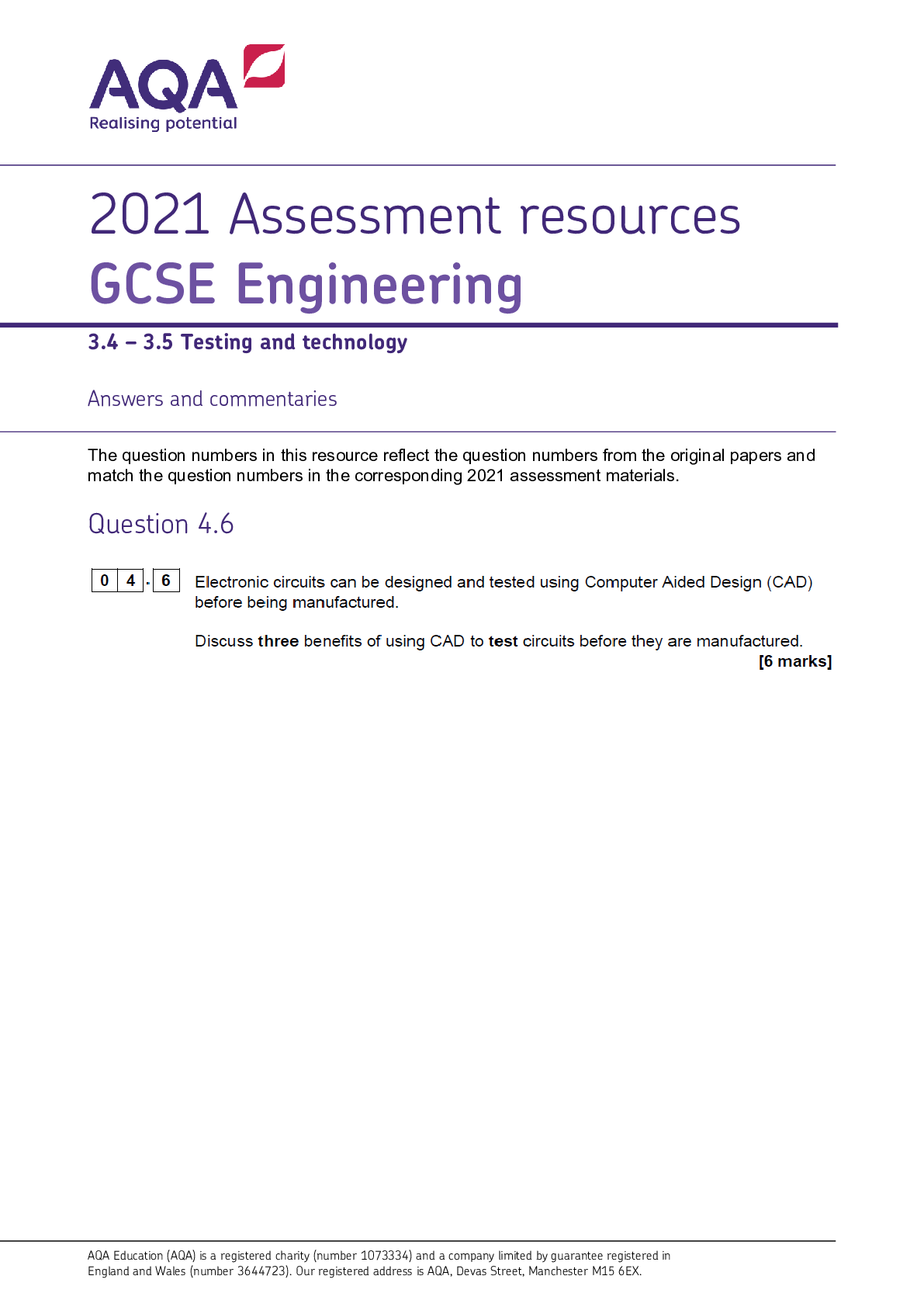
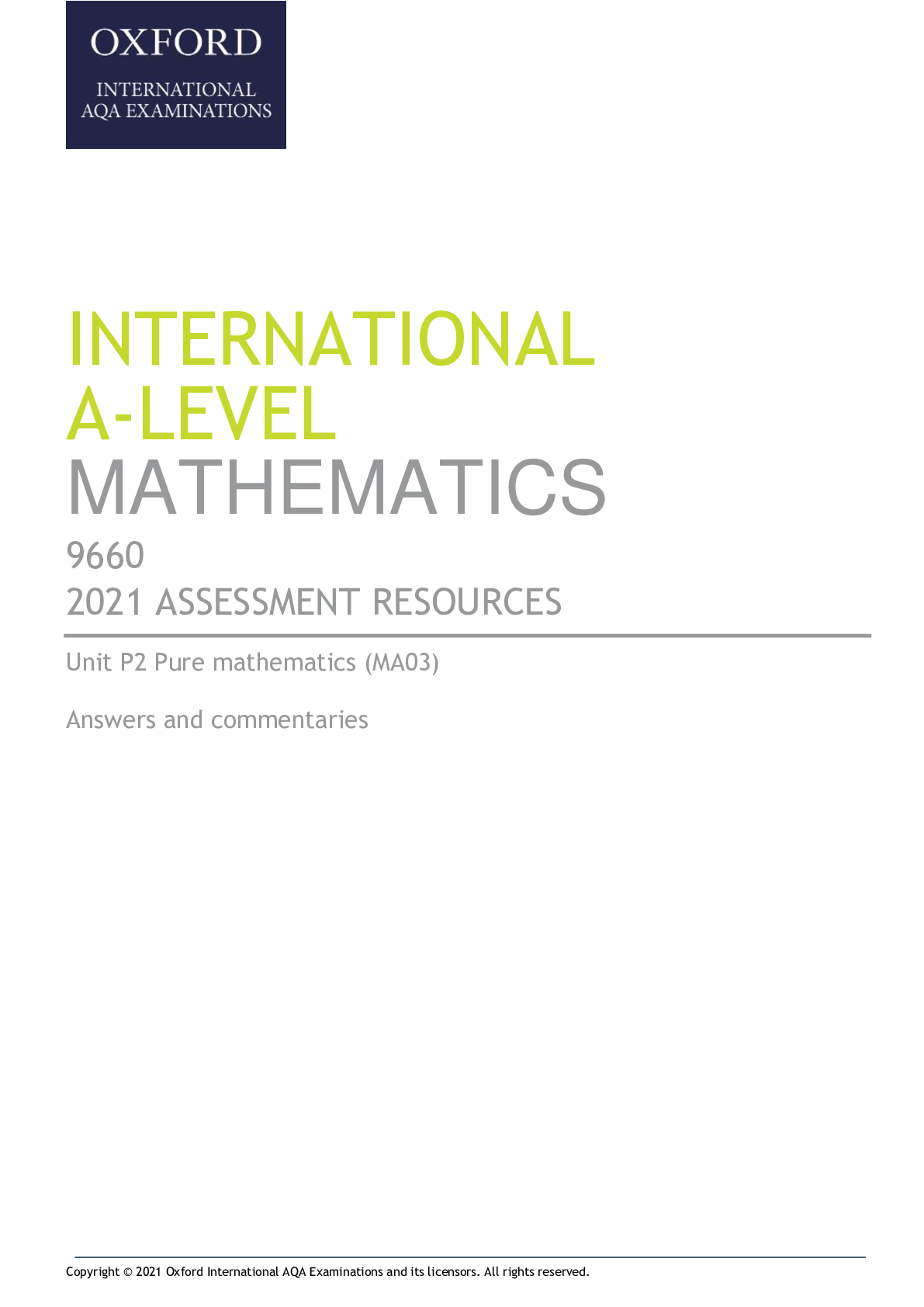
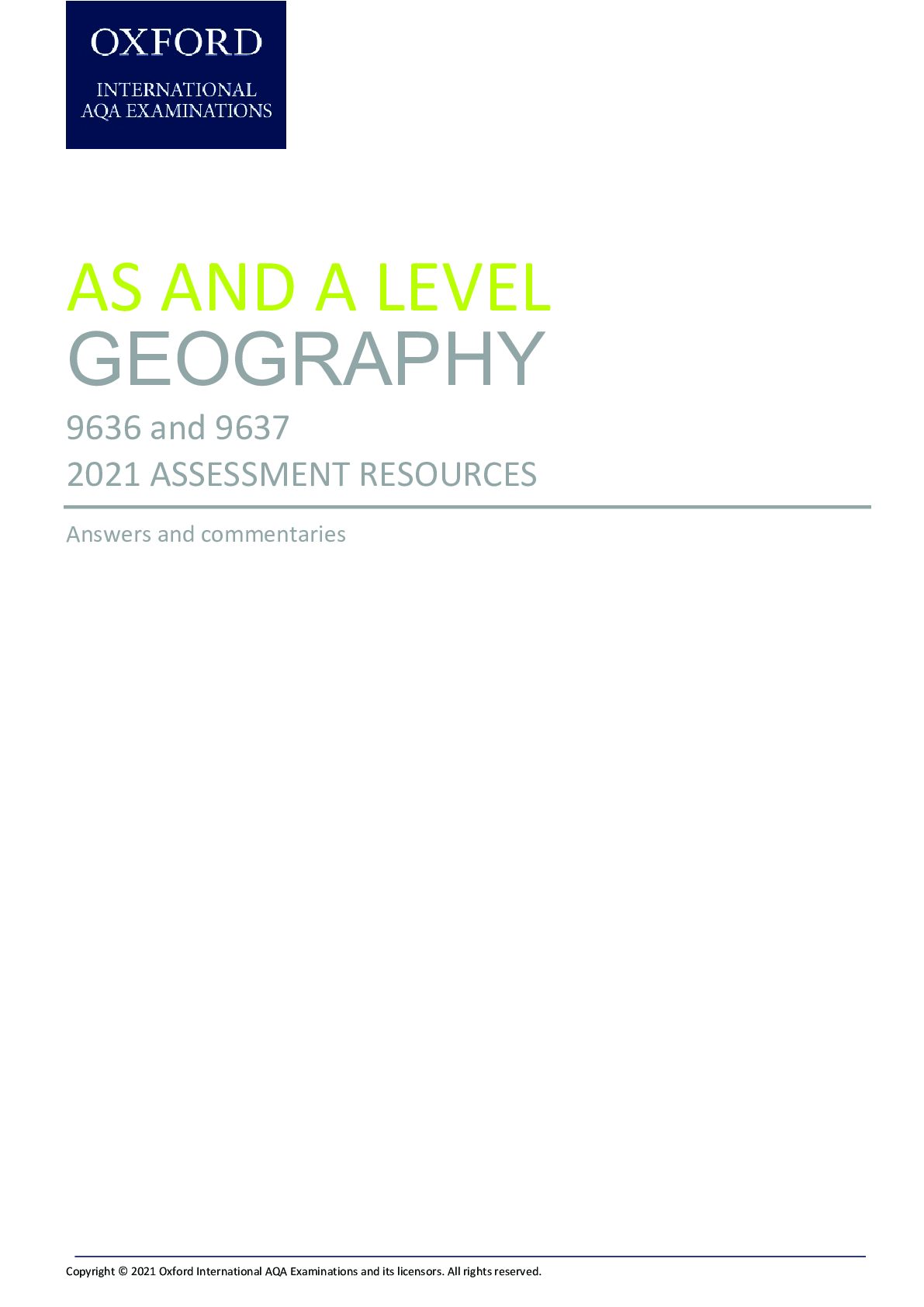

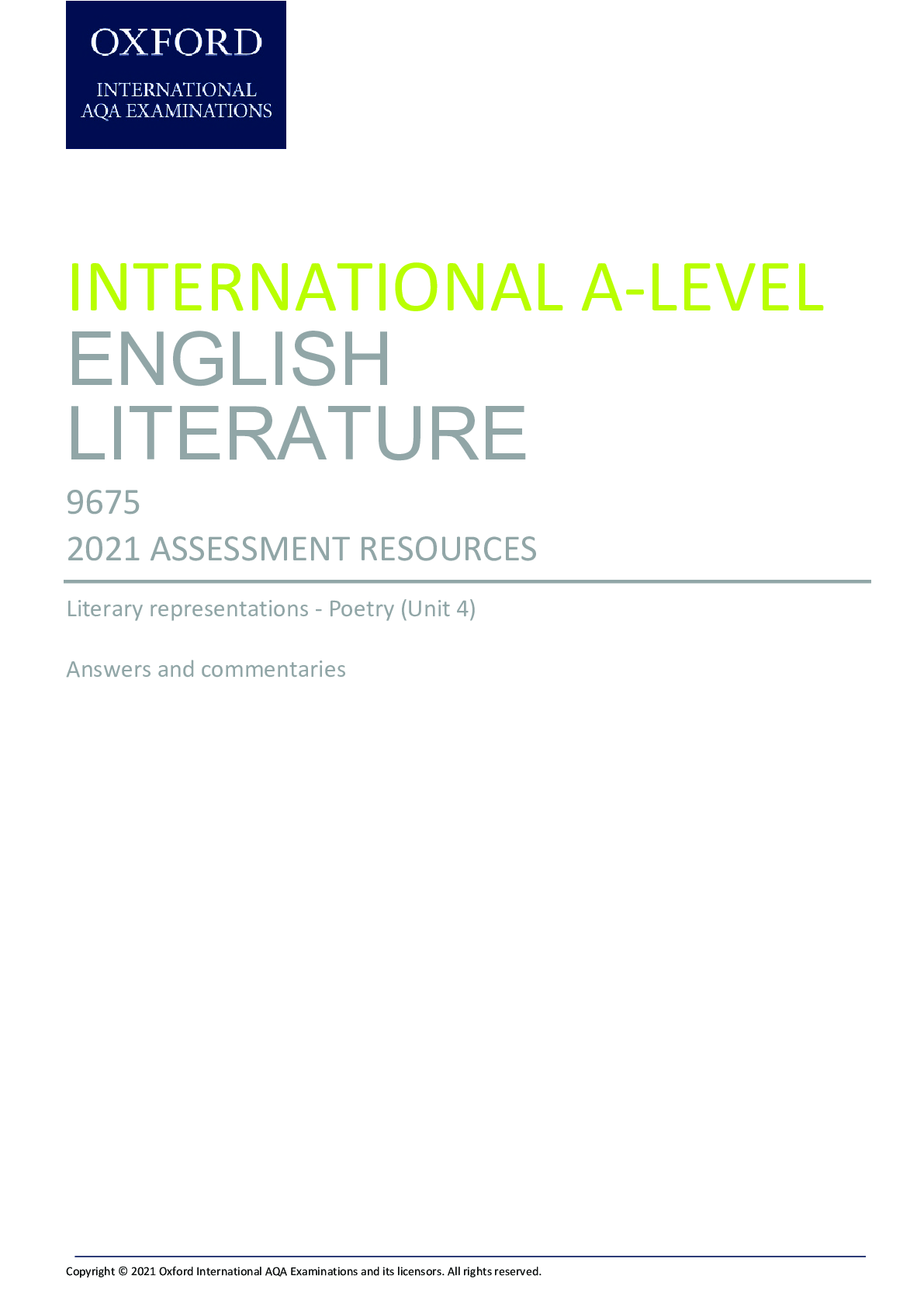


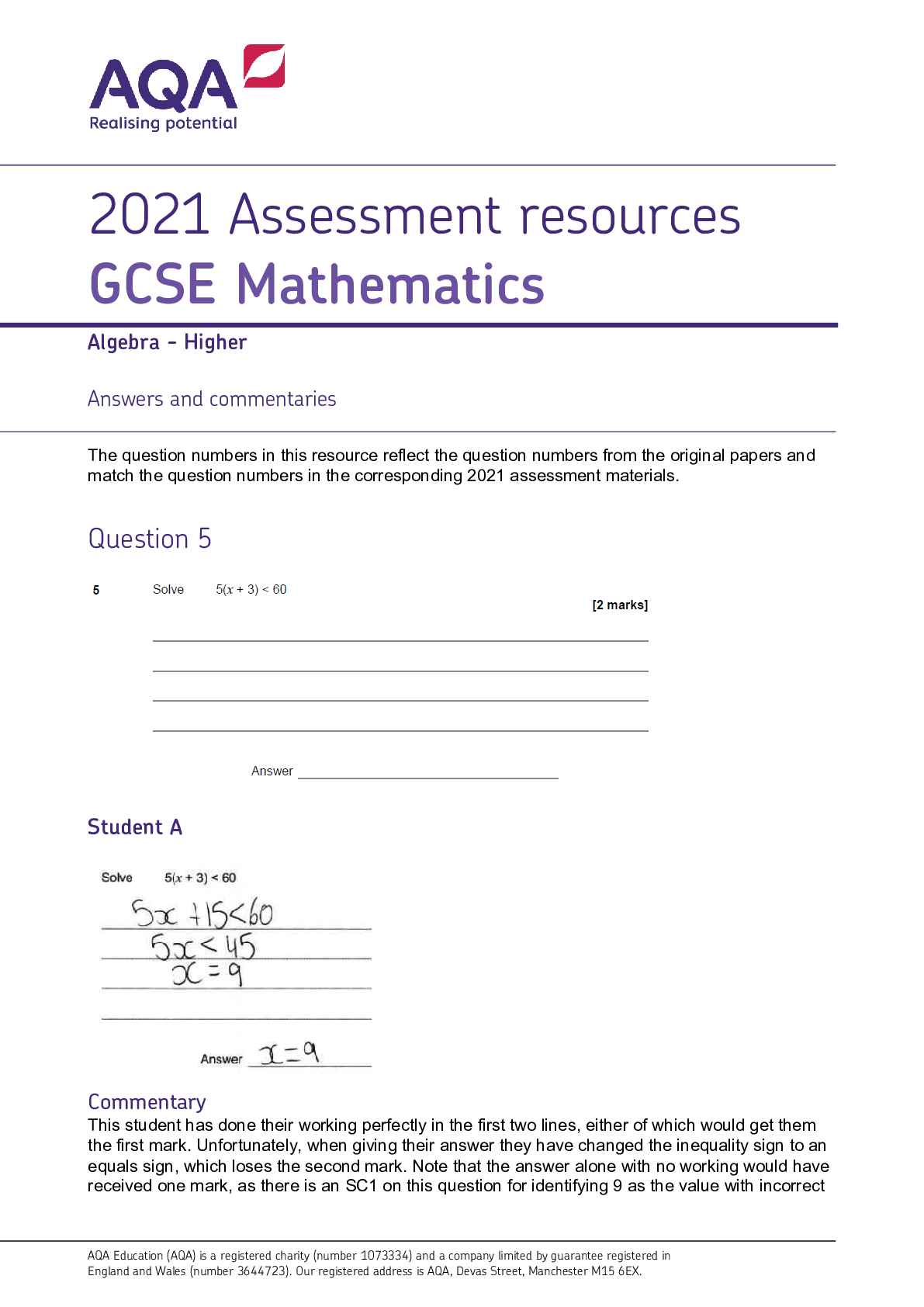


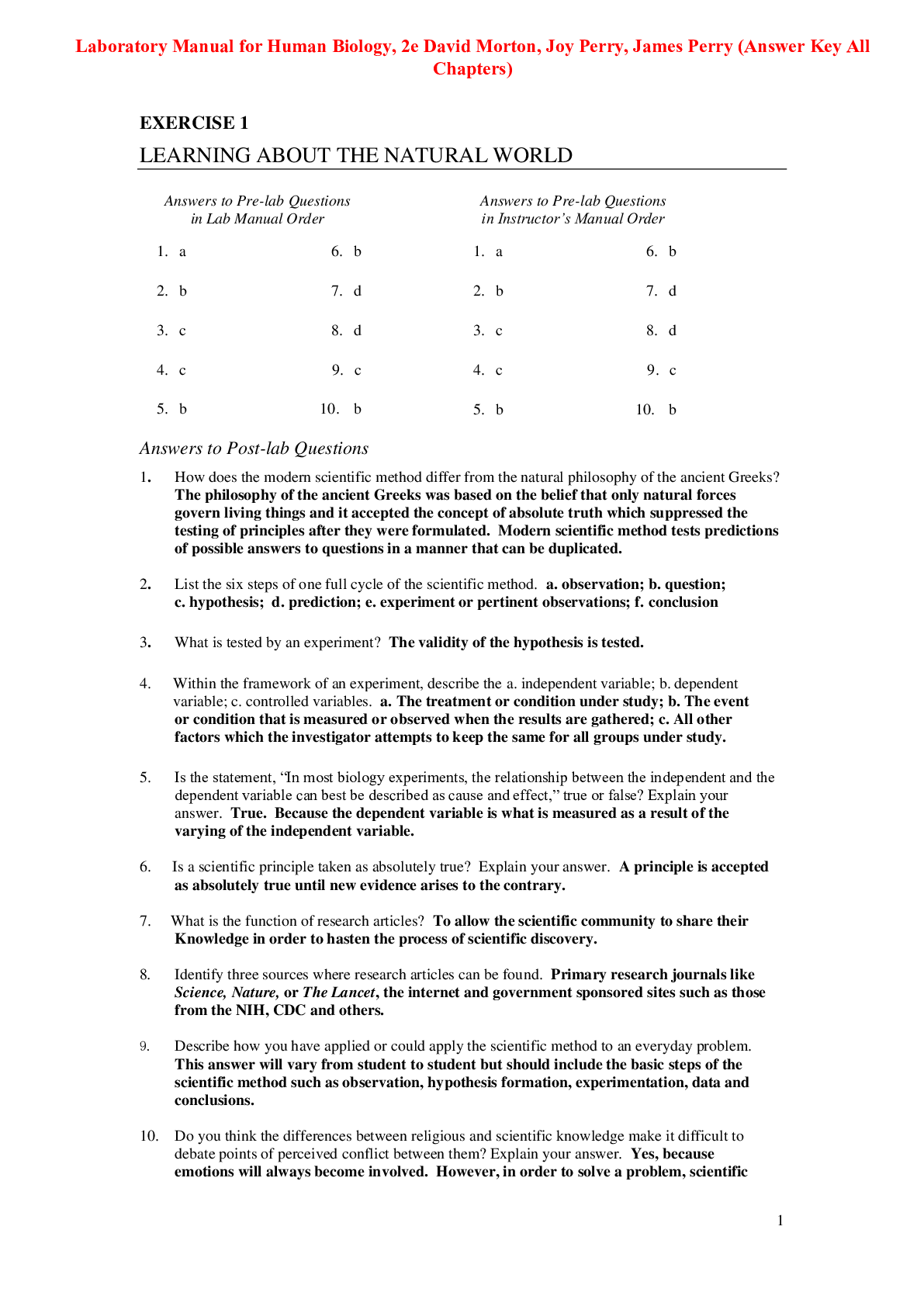

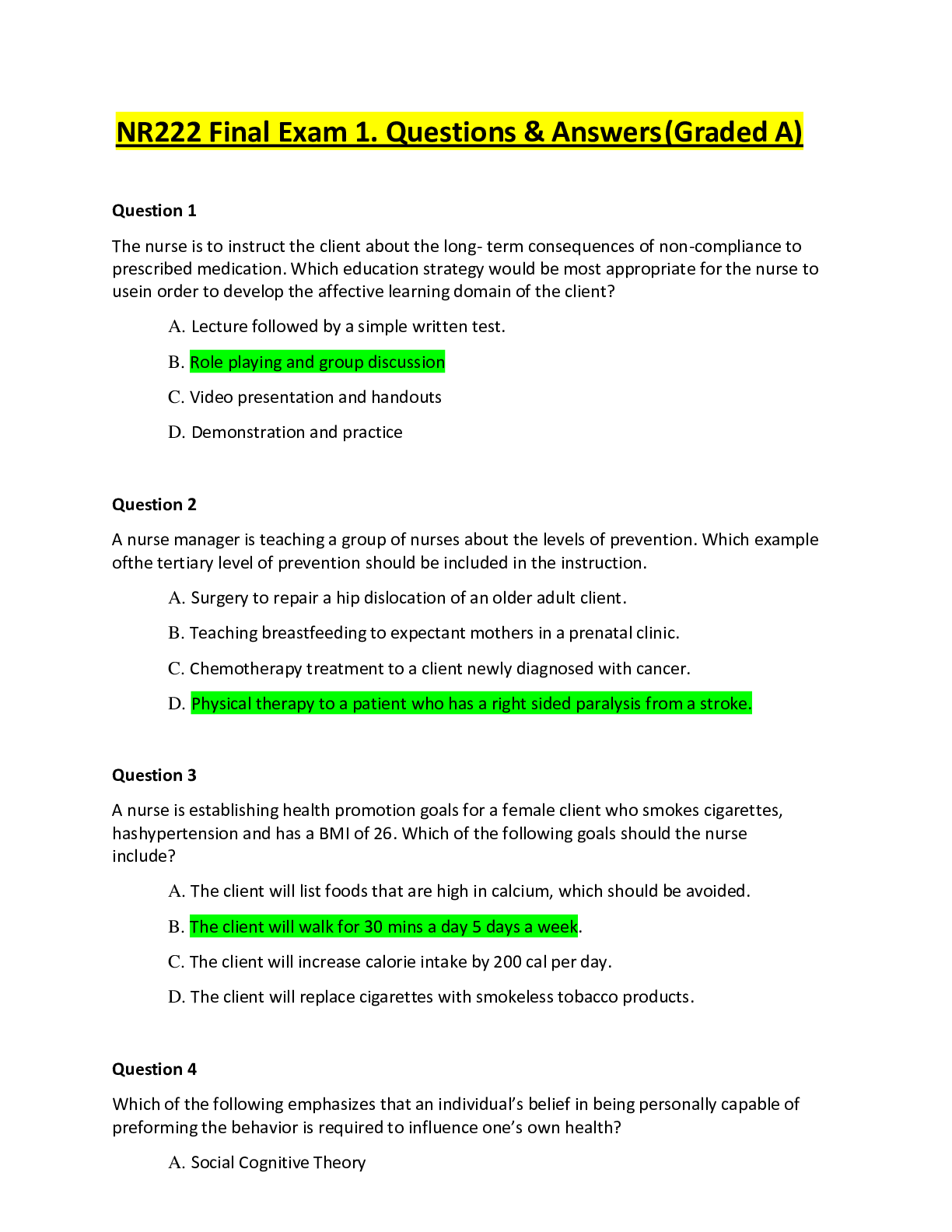
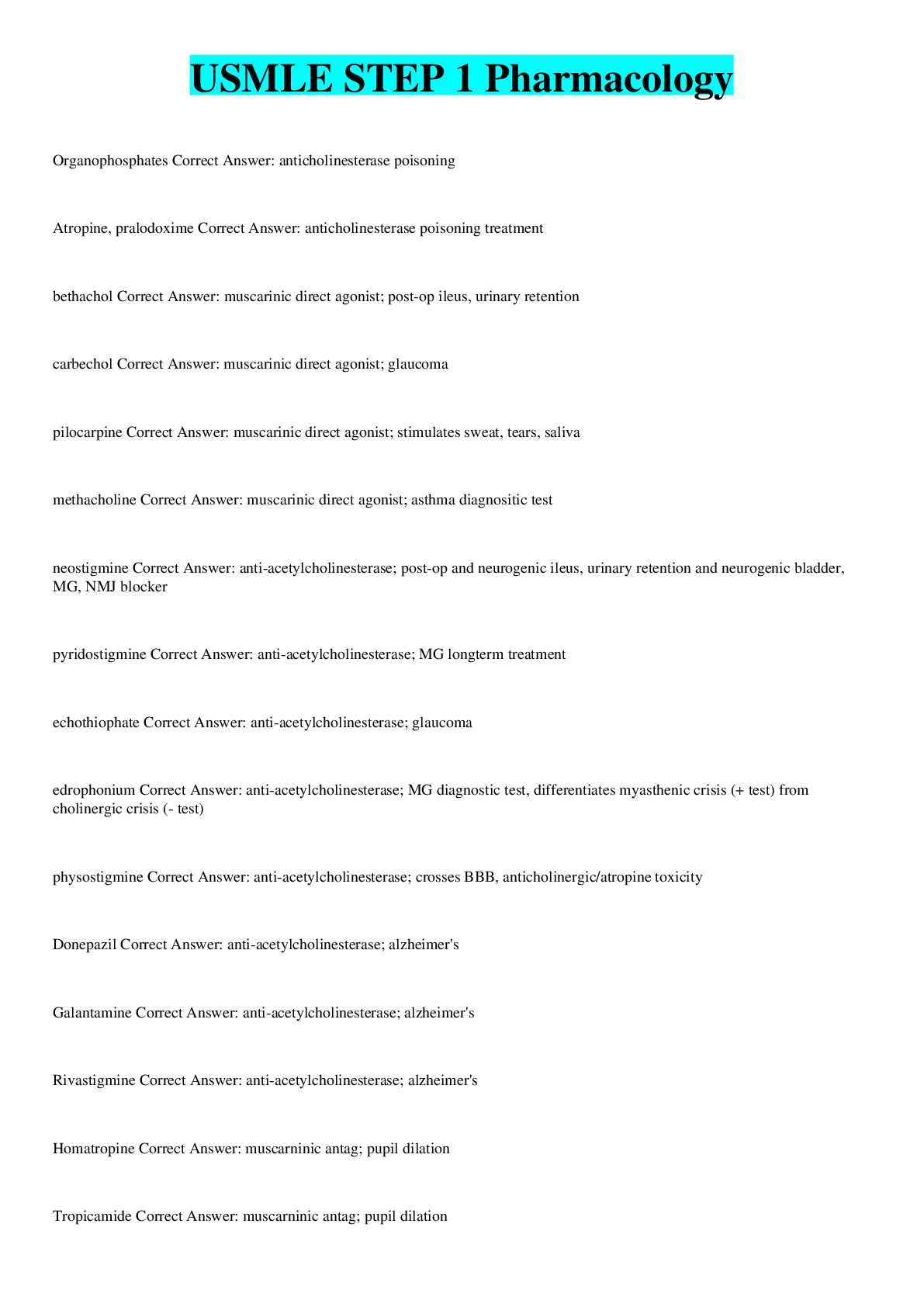

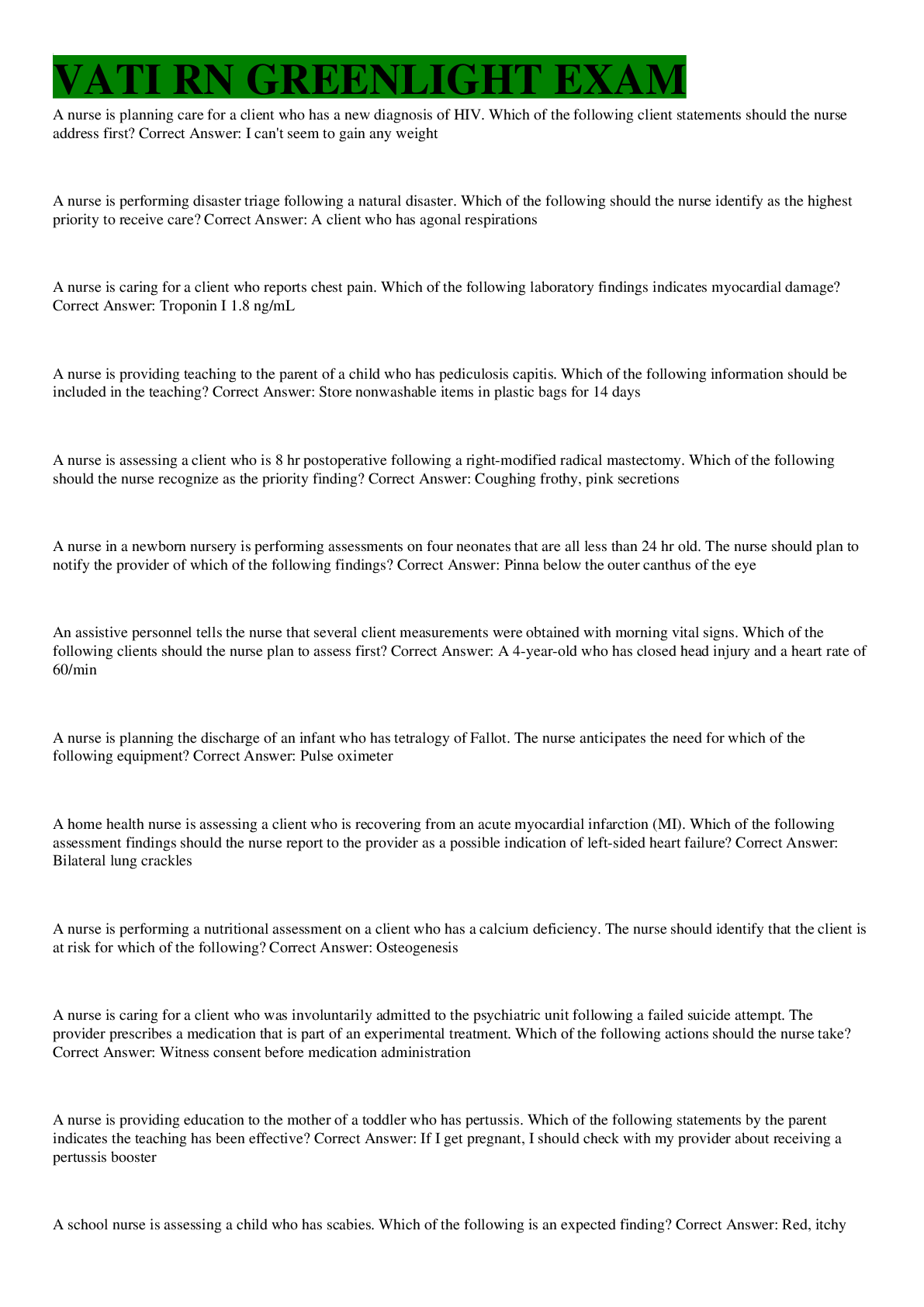
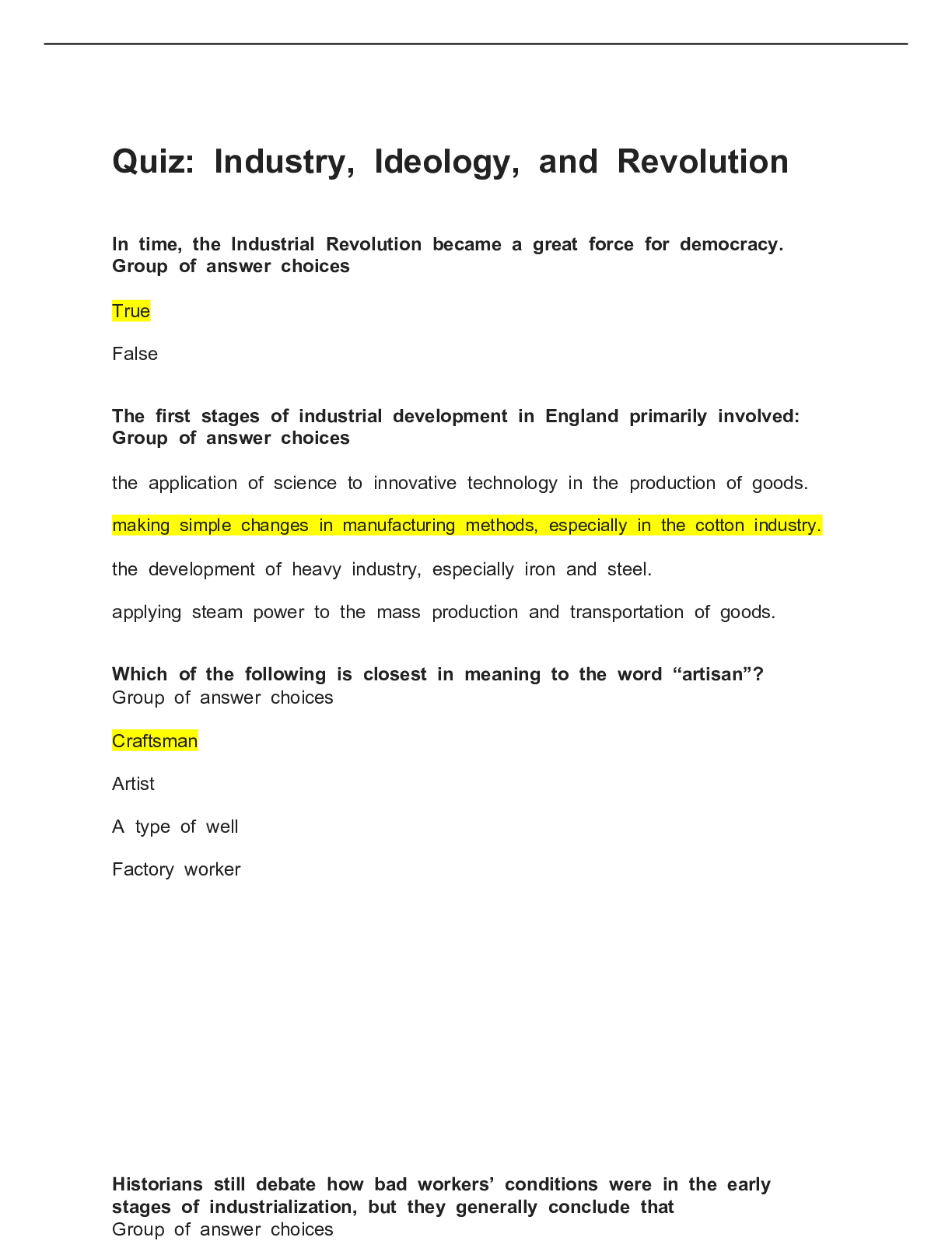
 UHC Ethics & Compliance 2022.png)

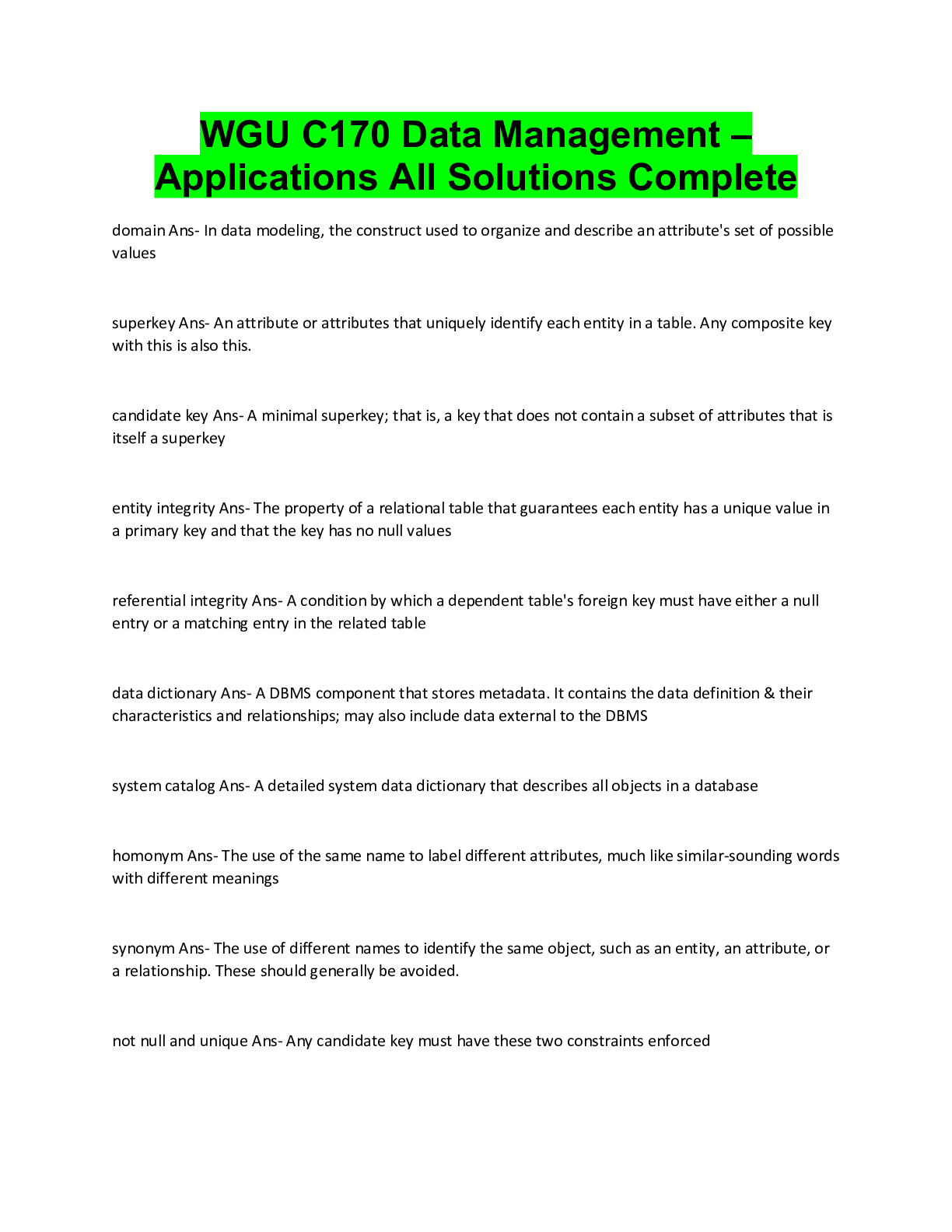
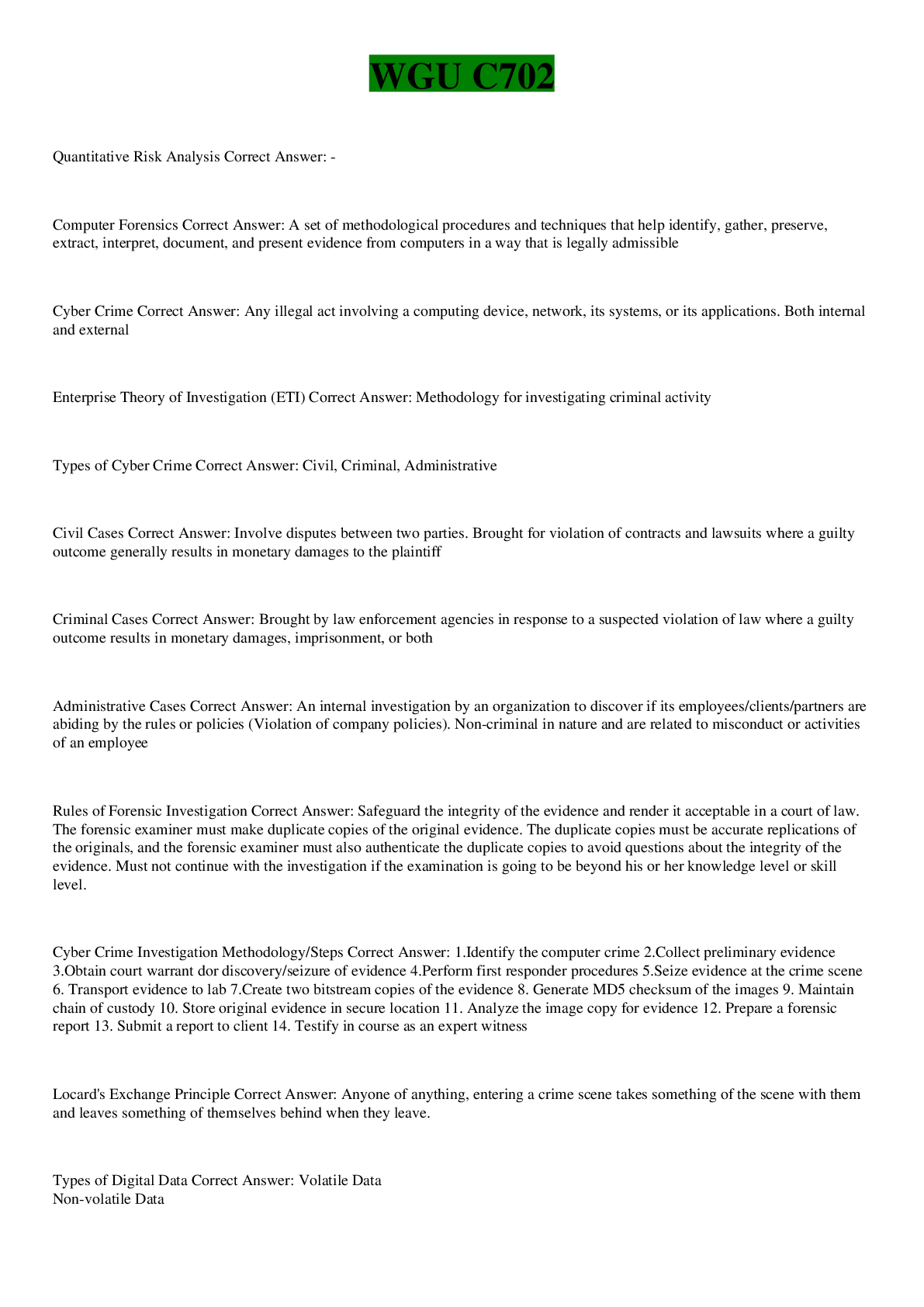
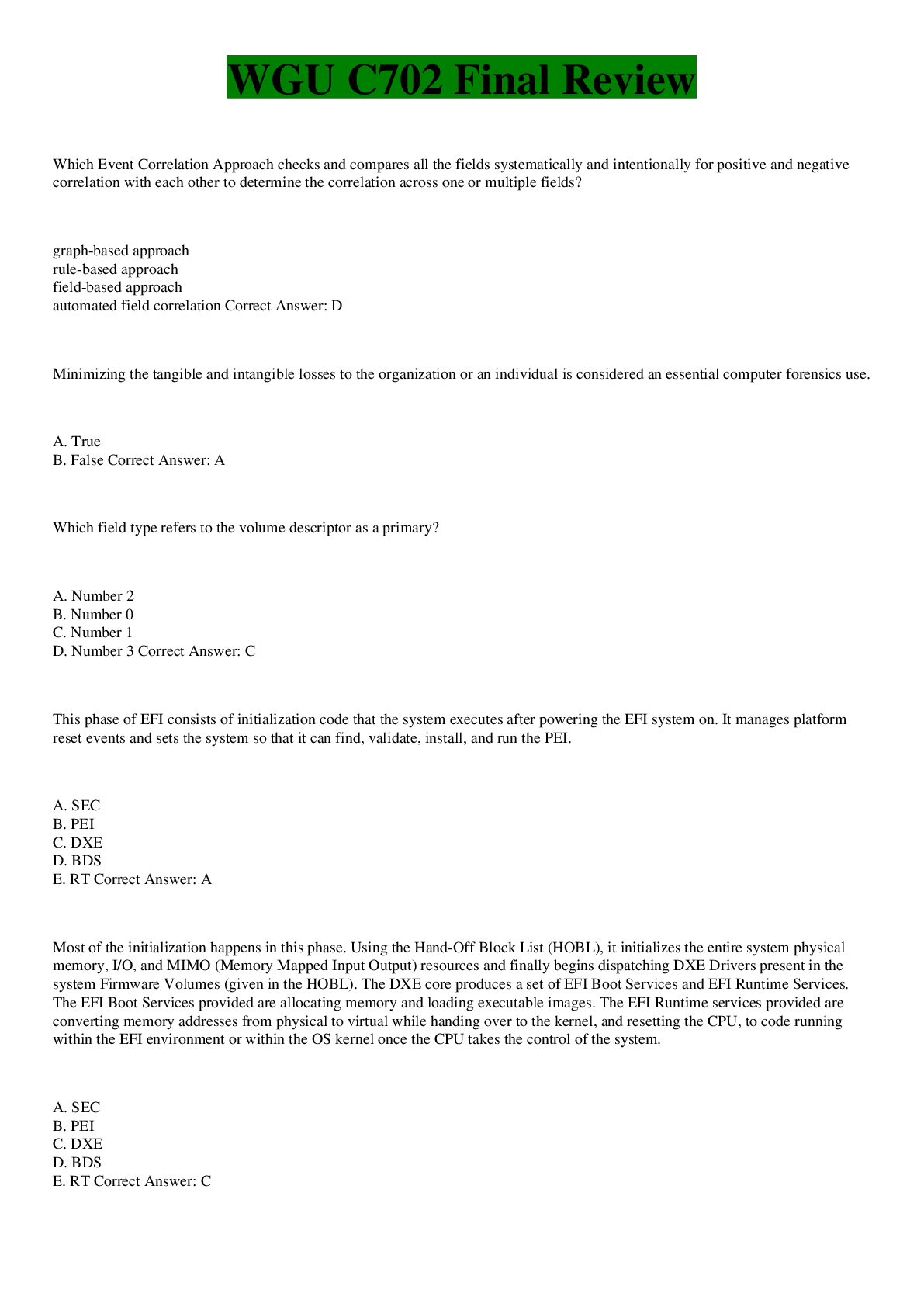
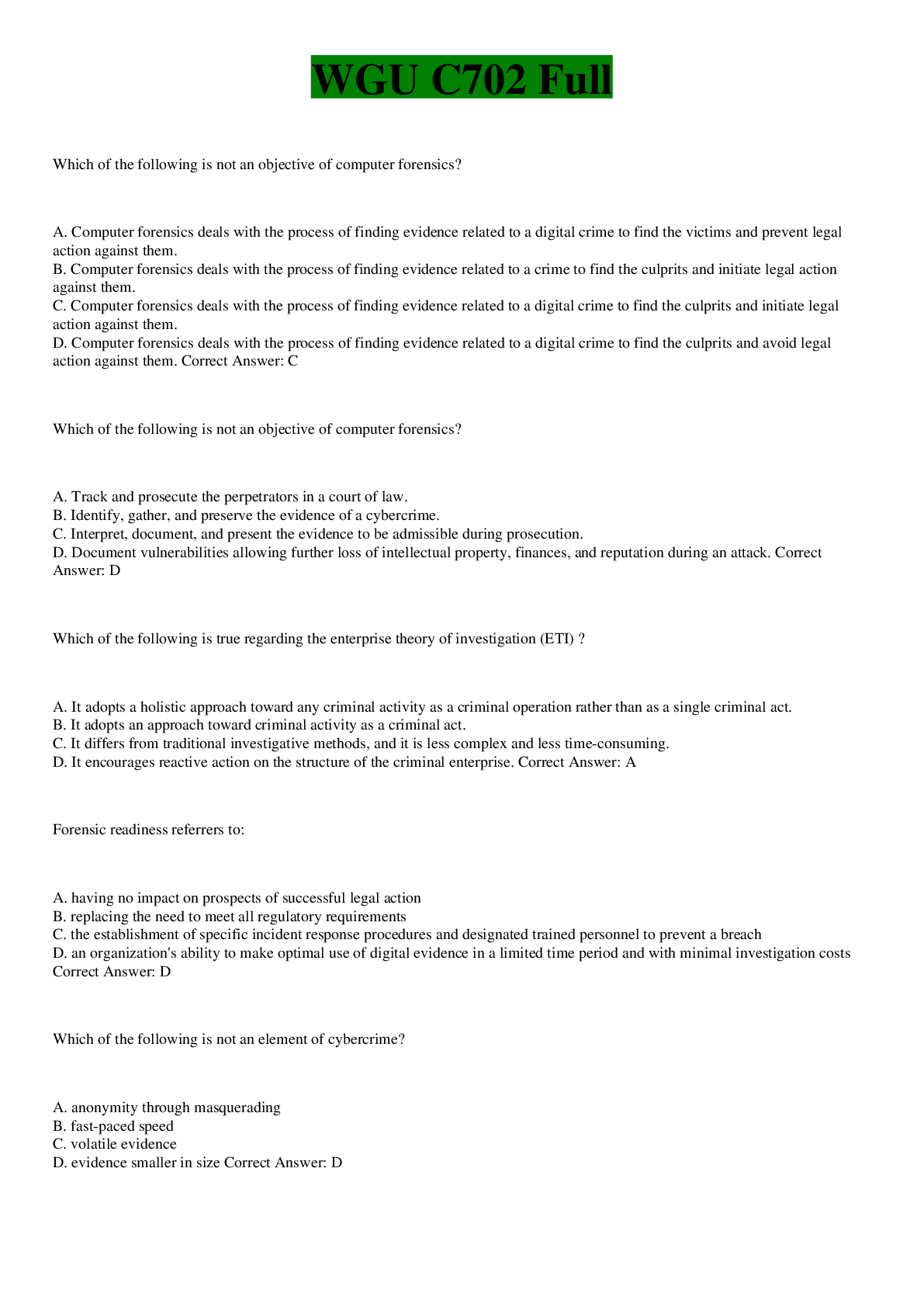


.png)
